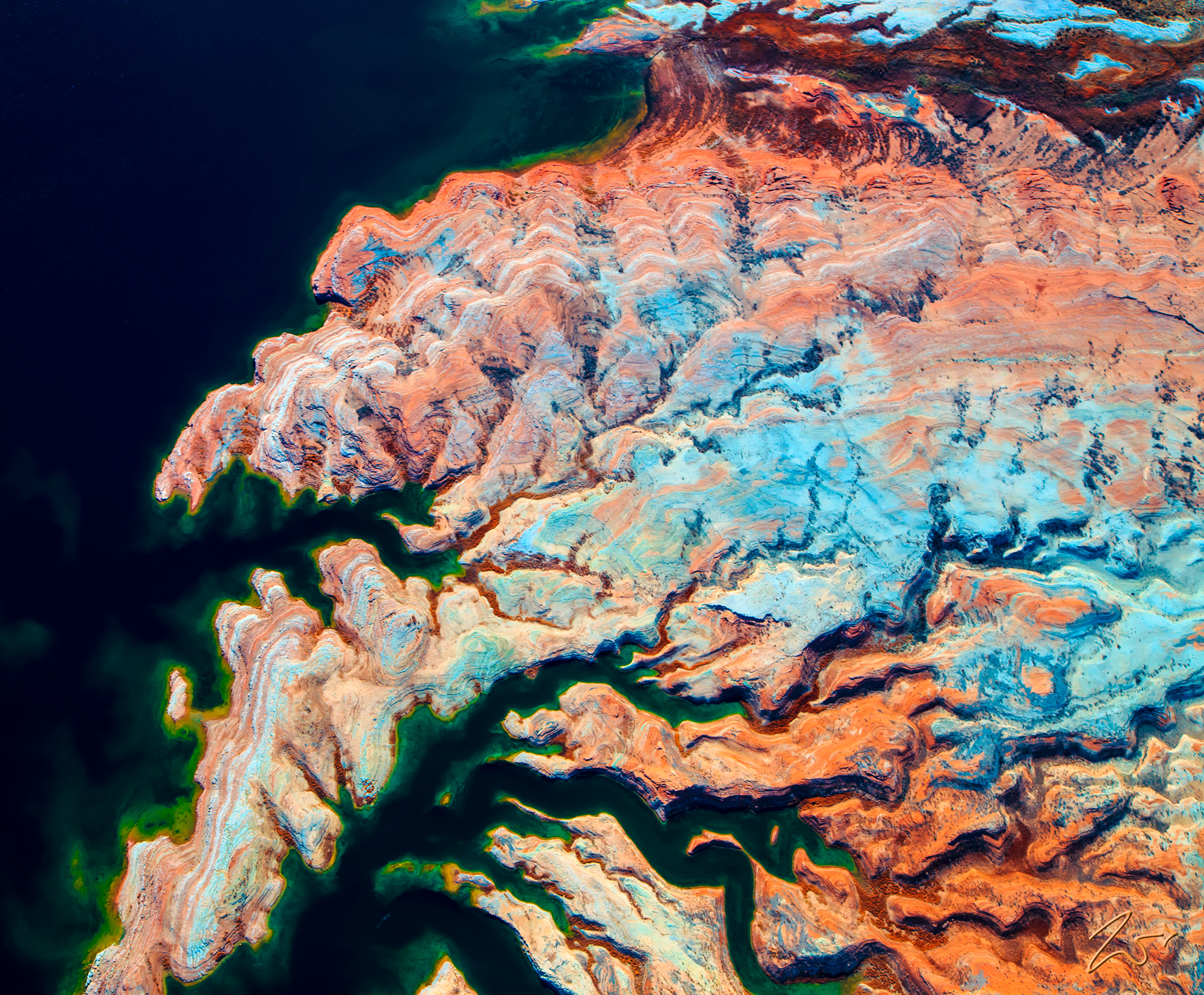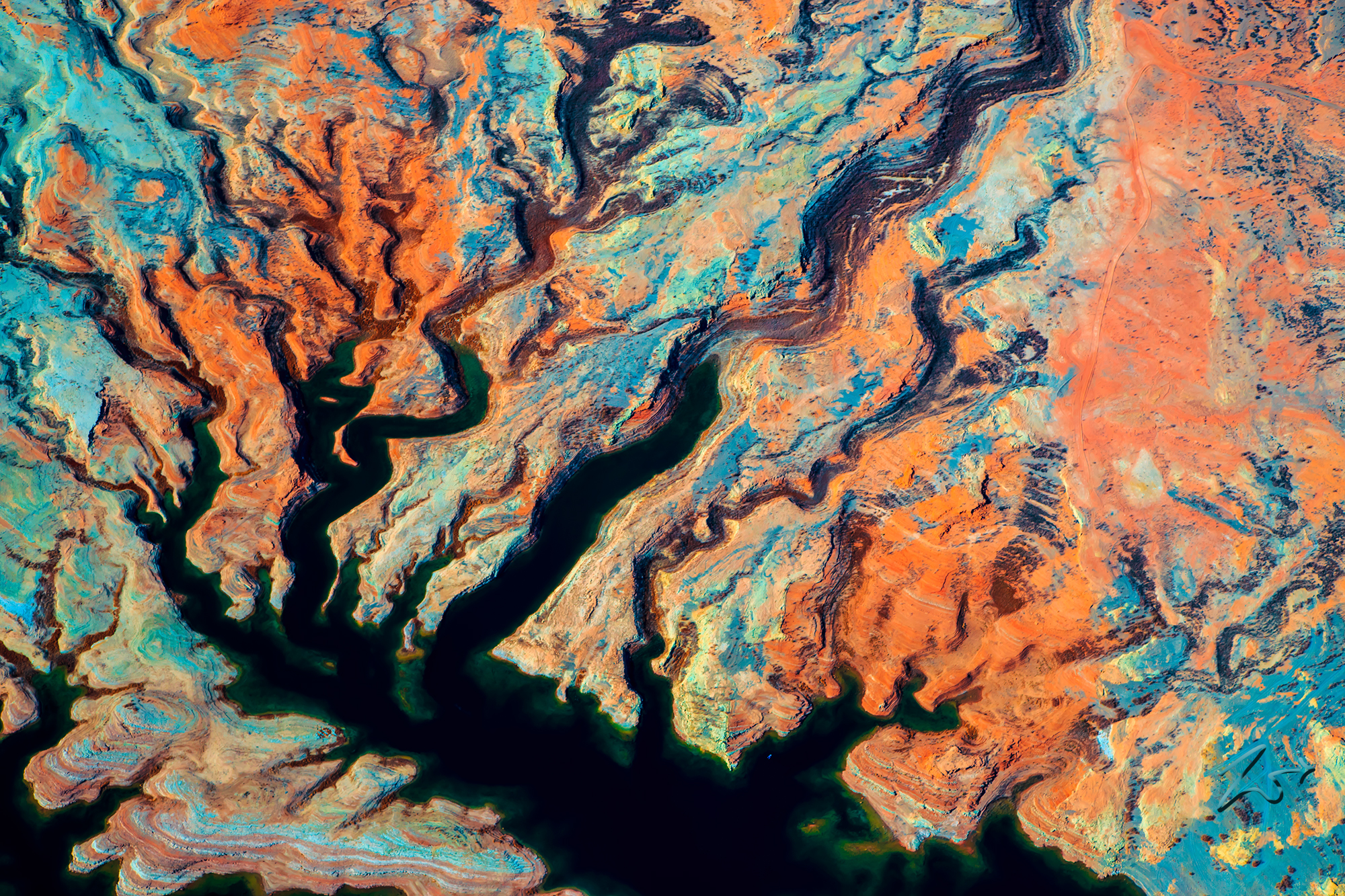
These are the shores of Blue Point Bay. The abundance of minerals that permeate the shores of the aptly named Blue Point Bay come from a series of hot springs west of the bay. Rogers Spring and smaller Blue Point Spring are continuously fed by hot water springs and are true desert oases with shallow ponds, fringed by desert trees, palms, and marshy vegetation.
The hot springs water rises to the surface at about 100 degrees, then cools to about 90 degrees in the ponds. Overflow from the springs creates little creeks that meander toward the shore of Lake Mead, depositing the various minerals all along the shoreline.
Zedekiah: “I took this image looking straight down from 2,500 feet above right after a very powerful rainstorm had passed through the area. The bright colors are the natural minerals in the rock and sand reacting to the combination of sunlight and the ground saturated with rainwater.”
The largest of several warm water springs along a fault line, Rogers Spring discharges hundreds of gallons per minute, constantly refreshing the water in the pool. Scientists think the water originates 250 miles north near Ely, part of an extensive aquifer in eastern Nevada and western Utah. As long as there have been human inhabitants in our area, the water bubbling to the surface at these springs attracted visitors.

Ancient visitors were probably early First Nations hunter-gatherer tribes. Later cultures built multi-storied villages and farmed along the Muddy River. Later still, a new culture rediscovered the springs in the 1800s. The spot became a favorite leisure-time destination for Mormon pioneers settling the nearby river valley, establishing communities such as Overton, Logandale, and St. Thomas.

